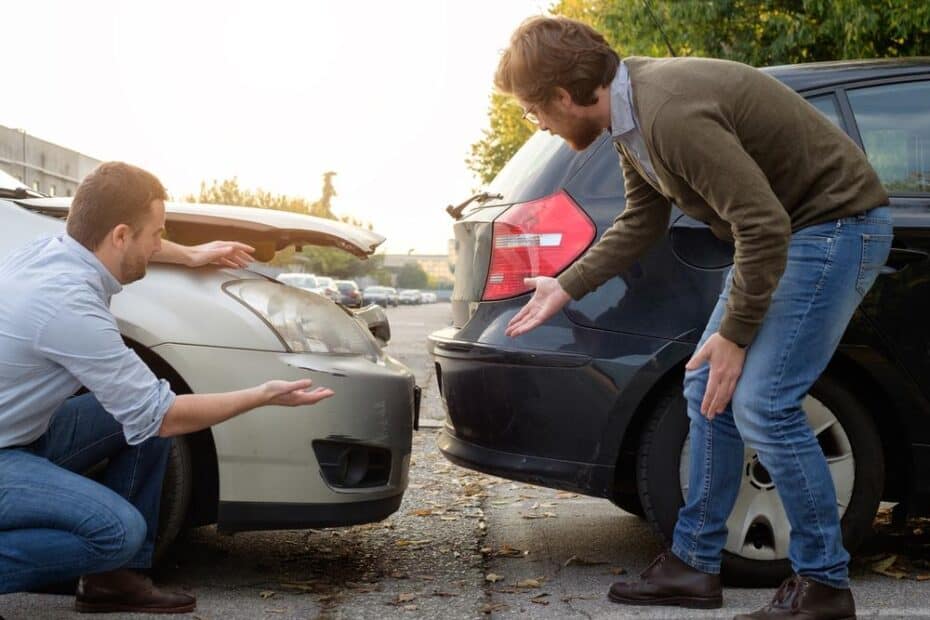Car accidents leave people with more than just vehicle damage. Between injuries, medical bills, lost work, and insurance headaches, it can be overwhelming. Some cases settle quickly, but others drag on, especially when insurance companies refuse to pay what’s owed.
When that happens, a car accident lawsuit might be the only way to recover full compensation. The accident lawsuit process isn’t fast or simple, but it’s designed to sort out disputes, hold negligent drivers accountable, and secure financial relief for accident victims.
If you’re wondering how lawsuits unfold, how long they take, or whether yours could end up in court, here’s what you need to know.
How the Car Accident Lawsuit Process Works
First Steps After a Car Crash
The decisions made in the minutes and hours after an accident can affect a lawsuit later. Some key steps help preserve evidence and protect a potential case:
- Call 911 to report the accident and request medical help if needed.
- Take photos of the scene, including vehicle damage, skid marks, road conditions, and visible injuries.
- Exchange information with the other driver and get contact details from any witnesses.
- Ask for a copy of the police report once it’s available.
Insurance companies may dispute fault, so having clear records from the start strengthens a case.
Filing an Insurance Claim
Before a lawsuit is filed, most people try settling through their insurance company. If the other driver was at fault, their insurance should cover medical expenses, vehicle repairs, and other damages. But insurance companies are businesses—their goal is to pay as little as possible.
Some common reasons accident victims turn to lawsuits instead of settlements:
- The insurance company refuses to pay or blames the victim.
- The settlement offer is too low to cover medical costs and lost wages.
- The at-fault driver doesn’t have enough insurance (or any at all).
When negotiations fail, the next step is filing a lawsuit.
When to Hire a Lawyer
Not every accident requires a lawyer, but serious cases usually do. Someone recovering from broken bones, a concussion, or months of physical therapy shouldn’t have to battle an insurance company alone.
A lawyer can help by:
- Investigating the accident and collecting police reports, medical records, and witness statements.
- Negotiating with insurers to secure a fair settlement.
- Filing a lawsuit and handling all court procedures if a settlement isn’t reached.
Since most car accident attorneys work on a contingency fee basis, there’s no upfront cost—the lawyer gets paid only if they win or settle the case.
Filing the Lawsuit
If the insurance company won’t offer enough to cover damages, the next step is filing a lawsuit in civil court.
A lawsuit begins with a complaint, which includes:
- A summary of how the accident happened.
- A breakdown of the injuries and damages suffered.
- A demand for compensation.
Once the lawsuit is filed, the defendant (usually the at-fault driver’s insurance company) has a deadline to respond.
Discovery: The Evidence-Gathering Phase
This part of the lawsuit process takes time. Both sides collect evidence, interview witnesses, and build their arguments.
Discovery includes:
- Depositions (formal interviews under oath).
- Requests for documents, such as medical records and accident reports.
- Expert testimony from doctors or accident reconstruction specialists.
Each side evaluates the strength of their case, which can lead to renewed settlement discussions.
Settlement Talks and Mediation
Most car accident lawsuits don’t go to trial—they settle before reaching that stage. At this point, both sides compare evidence and evaluate risks, hold formal settlement discussions, and, if needed, meet with a neutral mediator to negotiate an agreement. If the defense believes the plaintiff has a strong case, they’ll likely offer a fair settlement to avoid an unpredictable jury trial.
Trial and Verdict
If no agreement is reached, the case moves to trial. A judge or jury hears the arguments and decides:
- Who was at fault for the accident.
- How much compensation the plaintiff should receive.
Trials are unpredictable and expensive, which is why most cases settle long before this stage.
Key Legal Factors in a Car Accident Lawsuit
Proving Fault: How Negligence Works
A successful car accident lawsuit depends on proving negligence, which means showing the following 4 elements:
- The other driver had a duty to follow traffic laws.
- They failed to do so (by speeding, texting, running a red light, etc.).
- That failure caused the accident and injuries.
- The victim suffered real damages, such as medical bills, lost wages, and pain and suffering.
Compensation in a Car Accident Lawsuit
Medical Expenses
Settlements and court verdicts include compensation for medical expenses, both past and future. The compensation can cover emergency care, hospital stays, surgeries, physical therapy, and ongoing treatment for long-term injuries. When future medical care is expected, projected costs are included in the settlement or court award.
Lost Income and Reduced Earning Ability
A serious injury can keep someone out of work for weeks, months, or even permanently. Compensation for lost income accounts for wages missed during recovery. If the injury affects the ability to work long-term, a claim may also include reduced earning potential. A permanent disability that prevents a person from returning to their previous job or limits their career opportunities can have a significant financial impact. Compensation in these cases accounts for the long-term loss of earning potential and the need for career adjustments.
Pain and Suffering
Physical pain and emotional distress can be just as life-altering as financial losses. The amount awarded for pain and suffering depends on the severity of injuries, how long recovery takes, and whether long-term complications affect daily life. Injuries that cause chronic pain, permanent disability, or emotional trauma can lead to higher settlements or jury awards, especially when they significantly impact daily life and long-term well-being.
Punitive Damages
In cases where the at-fault driver acted recklessly, such as driving under the influence or engaging in road rage, punitive damages may be awarded. Unlike compensation for medical bills or lost wages, punitive damages serve as a penalty against the defendant and a deterrent for similar behavior. Courts typically reserve these damages for extreme negligence or intentional misconduct.
What Determines the Total Payout?
Each case is different, and the final amount depends on the severity of injuries and the insurance coverage available. More severe injuries tend to result in larger settlements, especially if they lead to lifelong medical issues or prevent the injured person from working. Insurance policy limits also play a role, as the at-fault driver’s coverage may cap the amount that can be recovered. If damages exceed policy limits, an attorney may look for additional sources of compensation, such as personal assets or employer liability in commercial vehicle accidents.
Challenges That Can Slow Down a Car Accident Lawsuit
Disputed Liability
If the other driver’s insurance company claims their policyholder wasn’t at fault, the case can drag on.
- Police reports, witness statements, and surveillance footage help prove what happened.
Comparative Fault Rules
Some states reduce compensation if the plaintiff shares any blame.
- In a state with modified comparative negligence, a victim found 51% at fault might receive nothing.
Uninsured Drivers
When the at-fault driver has no insurance, recovering damages is harder.
- Uninsured motorist coverage helps in these situations.
Frequently Asked Questions
How long does a car accident lawsuit take?
It depends. Some settle in a few months, while others take over a year if they go to trial.
Will I have to go to court?
Probably not. Most cases settle before reaching trial.
What if I was partly at fault?
It depends on state laws. Some states allow partial recovery, while others bar claims if the plaintiff shares any fault.
Should I accept the insurance company’s first offer?
Not without reviewing medical costs and future expenses. Early offers are typically too low.
How the Lawsuit Process Levels the Playing Field
Insurance companies control the initial settlement process, but a lawsuit shifts the balance. Taking legal action applies pressure, brings in objective evidence, and forces a closer review of damages. The right strategy doesn’t just seek compensation—it pushes back against lowball offers, disputes over fault, and tactics designed to minimize payouts. When handled correctly, the lawsuit process isn’t just about recovering losses; it’s about making sure the financial burden doesn’t fall unfairly on the injured party.






